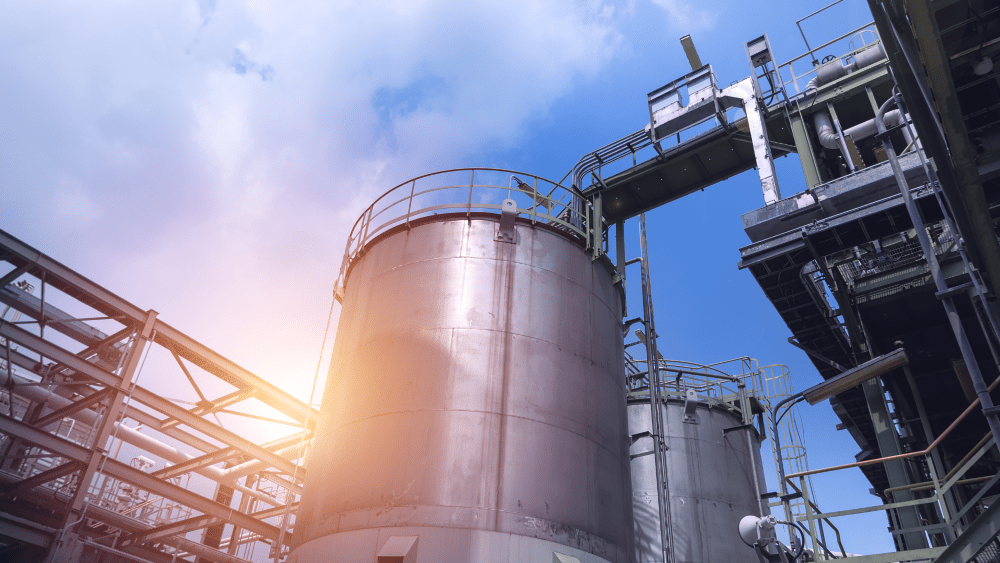Corrosion is a serious issue that can degrade the infrastructure of oil and gas facilities, thus causing many of the following: safety hazards, operational downtime, and, consequently, financial losses. Hence, when corrosion is mitigated, coatings and sealants become the most important since they can create physical and chemical barriers on the metal surfaces exposed to harsh operational environments. This sector has revolutionized the practices of corrosion resistance in education, which guarantees the durability and dependability of oil and gas infrastructure.
Understanding Corrosion Mechanisms
Generally, in oil and gas infrastructures, corrosion is caused by moisture, oxygen, hydrogen sulfide (H₂S), carbon dioxide (CO₂), and chlorides. The metal suffers a powerful impact due to the electrochemical reaction that occurs with the communicating flow between these agents and metal surfaces. Besides, high temperature and pressure are the factors that make this action go faster, especially in offshore and subsea sites. Coatings and sealants serve as the main protection against the repeated action of corrosion pathways and by isolating the metals from corrosive agents. This means a new stay of corrosion protection!
Advanced Protective Coatings
Protective coatings for oil and gas facilities have evolved beyond traditional paints to include sophisticated formulations engineered for specific environments. Consegic Business Intelligence analyzes that the paints and coatings market size is growing with a CAGR of 3.2% during the forecast period (2024-2031), and the market is projected to be valued at USD 251.17 Billion in 2031 from USD 195.90 Billion in 2023.
- Fusion-Bonded Epoxy (FBE) Coatings
FBE coatings are extensively employed for pipeline protection on account of their superb adherence and high scratch resistance and chemicals. The said coatings involve a thermoset polymer layer that firmly sticks to the metal surface and hence imparts a long-term cover even for a situation in which the operating temperatures are very high. Now, the PFBE formulations have been upgraded to include double-layer systems, which provide further protection against mechanical damage during the pipeline installation process, which is an innovation in FBE formulation.
- Thermally Sprayed Aluminum (TSA)
TSA coatings are the most implemented in offshore facilities due to their ability to combat both atmospheric and immersion corrosion. During the thermal spraying process, pieces of aluminum are melted and applied to the surfaces by the spray gun. The result is obtaining a solid layer across the three. Nowadays, TSA methods shift towards plasma-enhanced spraying, which is sustainable because of the high temperatures and good density of the new plasmas.
- Polymer-Based Coatings
In this category, epoxy and polyurethane coatings are the leading players. Epoxy coatings resist chemicals the best, and polyurethanes are highly flexible and UV stable. The latest polymer coatings gain the nano reinforcement of particles like graphene, silicon carbide, or something else, which makes them more resistant to wear and tear and impermeable.
- Self-Healing Coatings
A brilliant invention of technology, self-healing coatings bear capsules with healing agents such as liquid epoxy or polyurea that are housed within microscopic vacuoles. When a mechanical breakdown occurs, the capsules get cracked, and thus, the repair mechanism is induced to fill up the breach so the corrosion will not set in. This technology is being introduced for application in critical parts of industrial installations, like offshore risers and heat exchangers.
Role of Sealants
Sealants complement protective coatings by filling gaps, joints, and other areas prone to infiltration by corrosive agents. These materials need to withstand extreme temperatures, pressures, and chemical exposures in oil and gas facilities.
- Silicone-Based Sealants
Silicone sealants possess the advantages of high-temperature stability and oxidation resistance, which makes them appropriate for the joints of dilatation pipelines and reactor systems. The fluoropolymer-modified sealants are well suited to prevent the outer core from getting exploded by the fuel because of their resistance to aggressive gaseous fuels and acids.
- Elastomeric Sealants
Polysulfide and polyurethane elastomeric sealants are flexible, which makes them highly valued. These sealants possess the elasticity needed to undergo thermal expansion and contraction. Thus, the risk of cracking or disbanding in the case of dynamic systems is reduced.
- Hybrid Polymer Sealants
Hybrid polymer sealants are an amalgam of silicones and polyurethanes that include the advantages of such, i.e., their better adhesion, chemical resistance, and longer life. Such constructions, in the case of offshore platforms and storage tanks, are spreading due to their ability to withstand UV and saltwater conditions.
Innovations in Application Techniques
Protective coatings and sealants are only as effective as their application processes. Advances in application technology are critical for ensuring uniform coverage and maximizing performance.
- Automated Robotic Coating Systems
Robots furnished with precision sprayers allow the coating to be applied consistently, especially in areas that are hard to reach, like subsea pipelines and vessel interiors. Human errors and exposure to dangerous environments are much lower with the usage of robotic systems, thus both the quality of the product and the safety measures are improved.
- Electrostatic Spraying
This technology makes use of an electrostatic charge to draw the coating particles to the metal surfaces, thus bringing about an even distribution and less wastage. Electrostatic spraying has special pertinence to those parts that have intricate configurations, such as valves and pumps.
- Surface Preparation Advances
Correct surface preparation is the necessary condition for the coating’s adhesion. New technologies such as laser ablation and ultrasonic cleaning are taking the place of conventional abrasive blasting methods. These techniques bring about cleaner surfaces that are environmentally less harmful, hence making the bonds of the coatings stronger.
Conclusion
Protective coatings and sealants are indispensable for mitigating corrosion in oil and gas facilities. Advances in materials science, application techniques, and self-healing technologies are pushing the boundaries of corrosion resistance, ensuring the durability and efficiency of critical infrastructure. By adopting these state-of-the-art solutions, the industry can better manage the challenges posed by harsh environments, improving both safety and operational performance.





